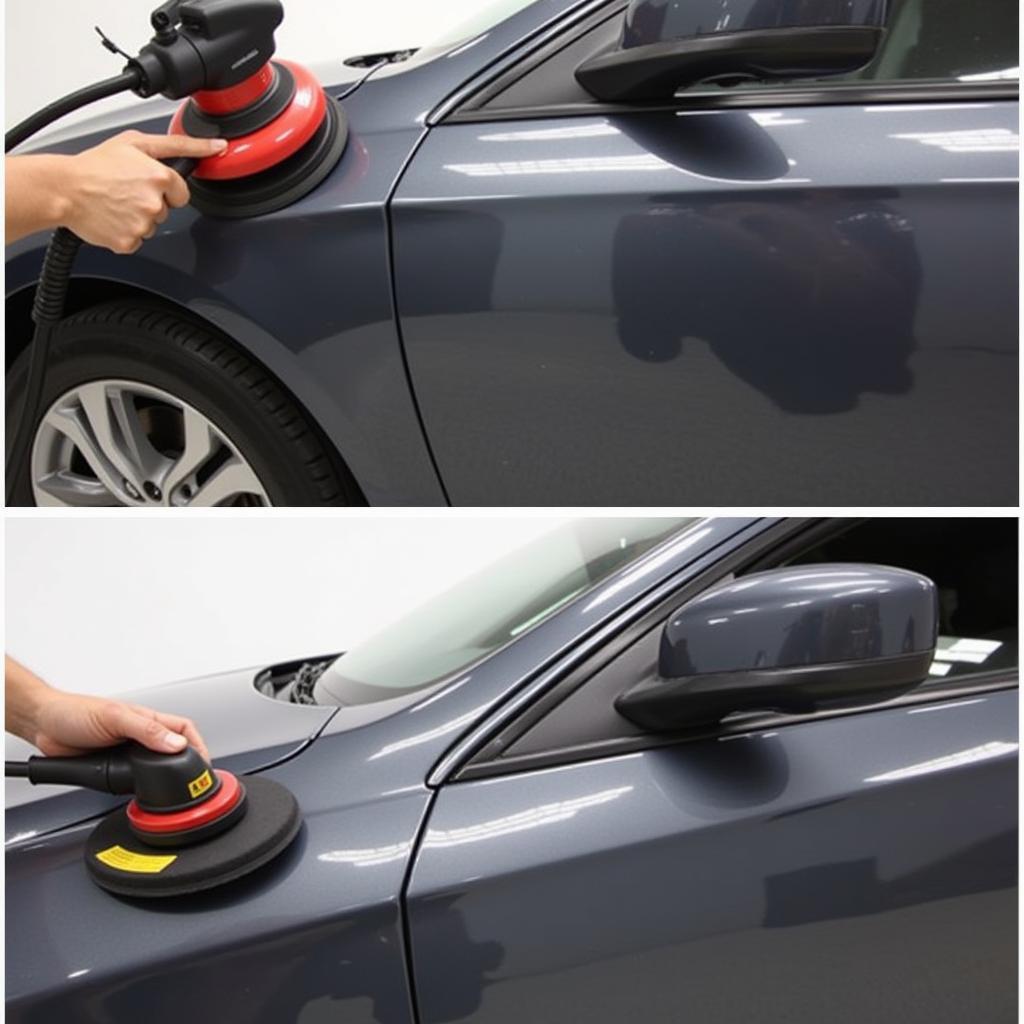Car detailing is more than just a car wash. It’s a thorough, meticulous process that restores and protects your vehicle’s finish, both inside and out. Knowing how to detail a car properly can save you money, increase your vehicle’s resale value, and most importantly, make your car look its absolute best. This comprehensive guide will walk you through every step, from washing and drying to polishing and protecting, ensuring a showroom-worthy shine.
Understanding the Importance of Car Detailing
Why bother detailing your car? It’s a question many car owners ask, especially with automatic car washes readily available. The answer lies in the depth of care. Detailing addresses issues a regular car wash misses, like ingrained dirt, swirl marks, and oxidation. It also protects your car’s paint from environmental damage, preserving its value and appearance for years to come. Regular detailing keeps your car looking its best and can even detect minor issues before they become major problems. For example, while cleaning the engine bay, you might notice a small leak that could become a costly repair if ignored. Similarly, examining the paintwork during the detailing process can reveal early signs of rust or damage, allowing you to address them promptly.
Washing and Drying: The Foundation of a Detailed Car
The first step in how to detail a car is a thorough wash. This isn’t your average drive-through wash. We’re talking about a two-bucket method, using a wash mitt and pH-balanced car shampoo. This method minimizes the risk of scratching your paint. One bucket holds the soapy water, the other clean rinse water. Rinse your mitt frequently in the clean water before reloading with soap. After washing, drying is equally important. Use a high-quality microfiber drying towel to prevent water spots and swirl marks. Consider using a drying aid to help the water sheet off the paint.
Knowing how much car detailing services cost can help you appreciate the value of DIY. Check out our guide on how much are car detailing for more information.
Clay Bar Treatment: Removing Embedded Contaminants
Even after a thorough wash, microscopic contaminants can remain embedded in your car’s paint. A clay bar treatment is the next step in how to detail a car, safely removing these contaminants. Lubricate the paint with a dedicated clay lubricant and gently glide the clay bar across the surface. You’ll feel the clay grabbing the contaminants, leaving your paint smooth and ready for polishing.
Polishing: Restoring the Shine
Polishing removes minor scratches and swirl marks, restoring your car’s paint to its original glory. This step requires a polishing machine and the right polish for your car’s paint type. Start with a less aggressive polish and work your way up if necessary. If you’re unsure about using a machine polisher, hand polishing is an option, although more time-consuming.
 Car Polishing Techniques Demonstrated
Car Polishing Techniques Demonstrated
Even new cars can benefit from detailing. Learn more about it in our article does a new car need detail.
Protecting Your Hard Work: Sealants and Wax
After polishing, protecting your paint is essential. Sealants and waxes provide a protective layer that guards against UV rays, environmental contaminants, and minor scratches. Sealants offer longer-lasting protection, while waxes provide a deeper shine. Choosing the right product depends on your preferences and the level of protection you desire.
Interior Detailing: A Clean and Comfortable Cabin
How to detail a car doesn’t stop at the exterior. Interior detailing involves vacuuming, shampooing carpets and upholstery, cleaning leather, and conditioning all surfaces. This creates a clean and comfortable cabin, free of dust, dirt, and unpleasant odors. Use dedicated interior cleaners and protectants to maintain the appearance and longevity of your car’s interior materials.
Engine Bay Detailing: Keeping it Clean Under the Hood
A clean engine bay not only looks good but can also make it easier to spot potential issues. Degrease the engine and surrounding components, then rinse with a gentle stream of water. Avoid using high-pressure water, as it can damage sensitive electronics. Finish by dressing the engine bay with a suitable protectant. Learn more about cleaning your engine in our guide how to detail clean a car engine.
Conclusion: Maintaining Your Detailed Car
Knowing how to detail a car is an investment in your vehicle’s appearance and longevity. Regular washes, quick detailing sessions, and annual full details will keep your car looking its best for years to come. A detailed car is a joy to own and drive, reflecting your pride and care.
For a complete understanding of what a full detail entails, refer to our article what is full detailing on a car.
FAQ
- How often should I detail my car?
- What products do I need for car detailing?
- Can I detail my car in direct sunlight?
- What’s the difference between a sealant and a wax?
- Is it necessary to clay bar my car every time I detail it?
- How do I remove water spots from my car’s paint?
- What’s the best way to clean leather car seats?
Common Car Detailing Scenarios
- Scenario 1: You’ve just bought a used car and want to restore its former glory. A full detail is recommended to address any existing imperfections and protect the paint.
- Scenario 2: Your car is relatively new, but you want to maintain its showroom shine. Regular washes and occasional quick detailing sessions will suffice.
- Scenario 3: You live in a harsh environment with lots of salt, snow, or sun. Consider applying a ceramic coating for added protection.
Further Resources
You may also find the following articles helpful:
- How to check car details with number plate: how to check car details with number plate
Need assistance? Contact us via WhatsApp: +1(641)206-8880, or Email: [email protected]. Our 24/7 customer support team is ready to help.

Leave a Reply